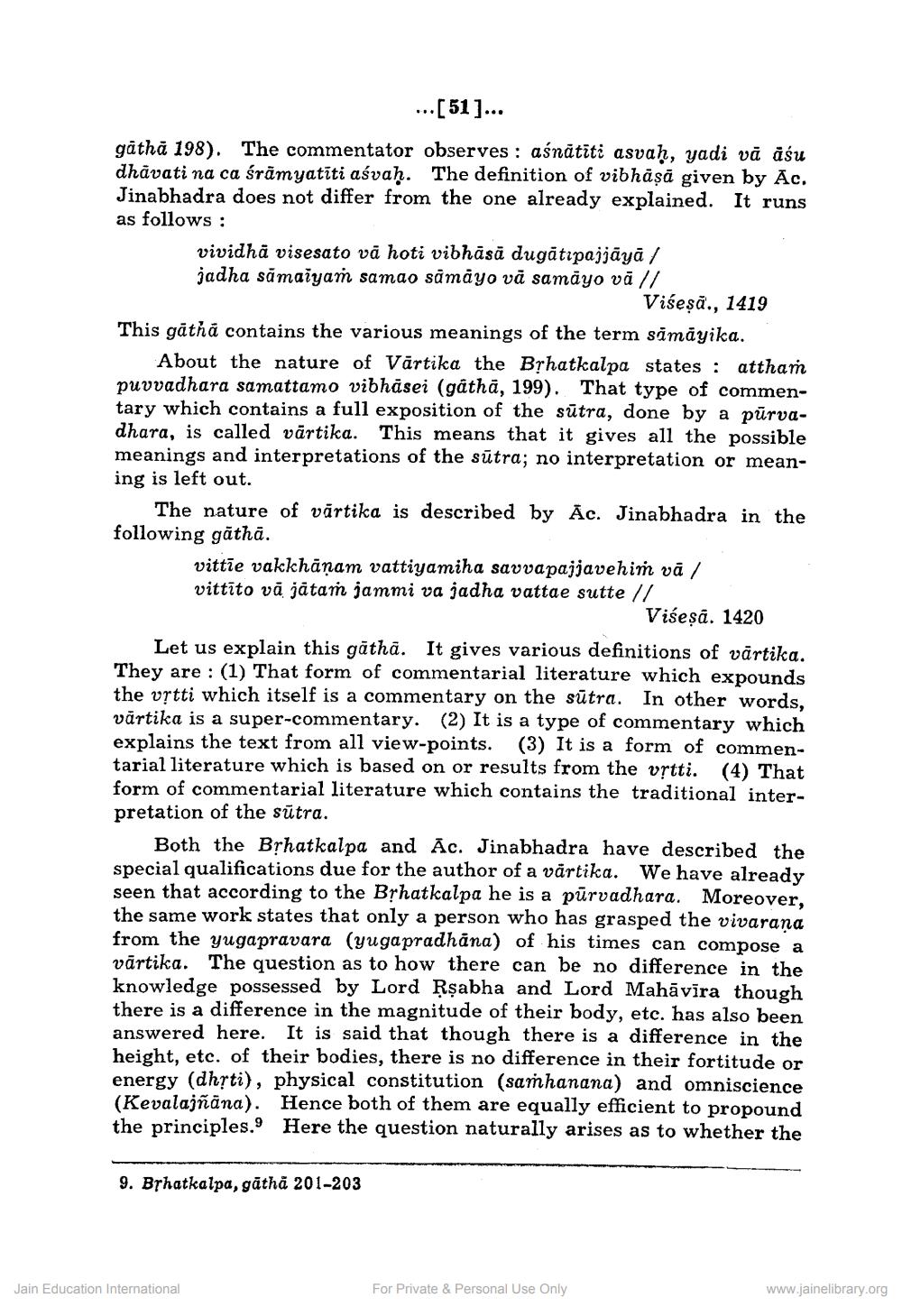________________
... [51]...
gāthā 198). The commentator observes: aśnatiti asvaḥ, yadi va asu dhavati na ca śrämyatīti aśvah. The definition of vibhāṣā given by Ac. Jinabhadra does not differ from the one already explained. It runs as follows:
vividhä visesato vā hoti vibhāsā dugātipajjāyā / jadha samaiyam samao samayo vā samayo vā //
Viśeșă., 1419
This gatha contains the various meanings of the term sāmāyika.
About the nature of Vārtika the Bṛhatkalpa states: attham puvvadhara samattamo vibhāsei (gäthā, 199). That type of commentary which contains a full exposition of the sutra, done by a purvadhara, is called värtika. This means that it gives all the possible meanings and interpretations of the sutra; no interpretation or meaning is left out.
The nature of vārtika is described by Ac. Jinabhadra in the following gathā.
vittie vakkhānam vattiyamiha savvapajjavehiṁ vā / vittīto vā jātam jammi va jadha vattae sutte //
Viseṣā. 1420
Let us explain this gatha. It gives various definitions of vārtika. They are: (1) That form of commentarial literature which expounds the vṛtti which itself is a commentary on the sutra. In other words, vārtika is a super-commentary. (2) It is a type of commentary which explains the text from all view-points. (3) It is a form of commentarial literature which is based on or results from the vṛtti. (4) That form of commentarial literature which contains the traditional interpretation of the sutra.
Both the Bṛhatkalpa and Ac. Jinabhadra have described the special qualifications due for the author of a vārtika. We have already seen that according to the Bṛhatkalpa he is a pūrvadhara. Moreover, the same work states that only a person who has grasped the vivarana from the yugapravara (yugapradhana) of his times can compose a vārtika. The question as to how there can be no difference in the knowledge possessed by Lord Rṣabha and Lord Mahāvīra though there is a difference in the magnitude of their body, etc. has also been answered here. It is said that though there is a difference in the height, etc. of their bodies, there is no difference in their fortitude or energy (dhṛti), physical constitution (samhanana) and omniscience (Kevalajñāna). Hence both of them are equally efficient to propound the principles.9 Here the question naturally arises as to whether the
Jain Education International
9. Brhatkalpa, gāthā 201-203
For Private & Personal Use Only
www.jainelibrary.org




